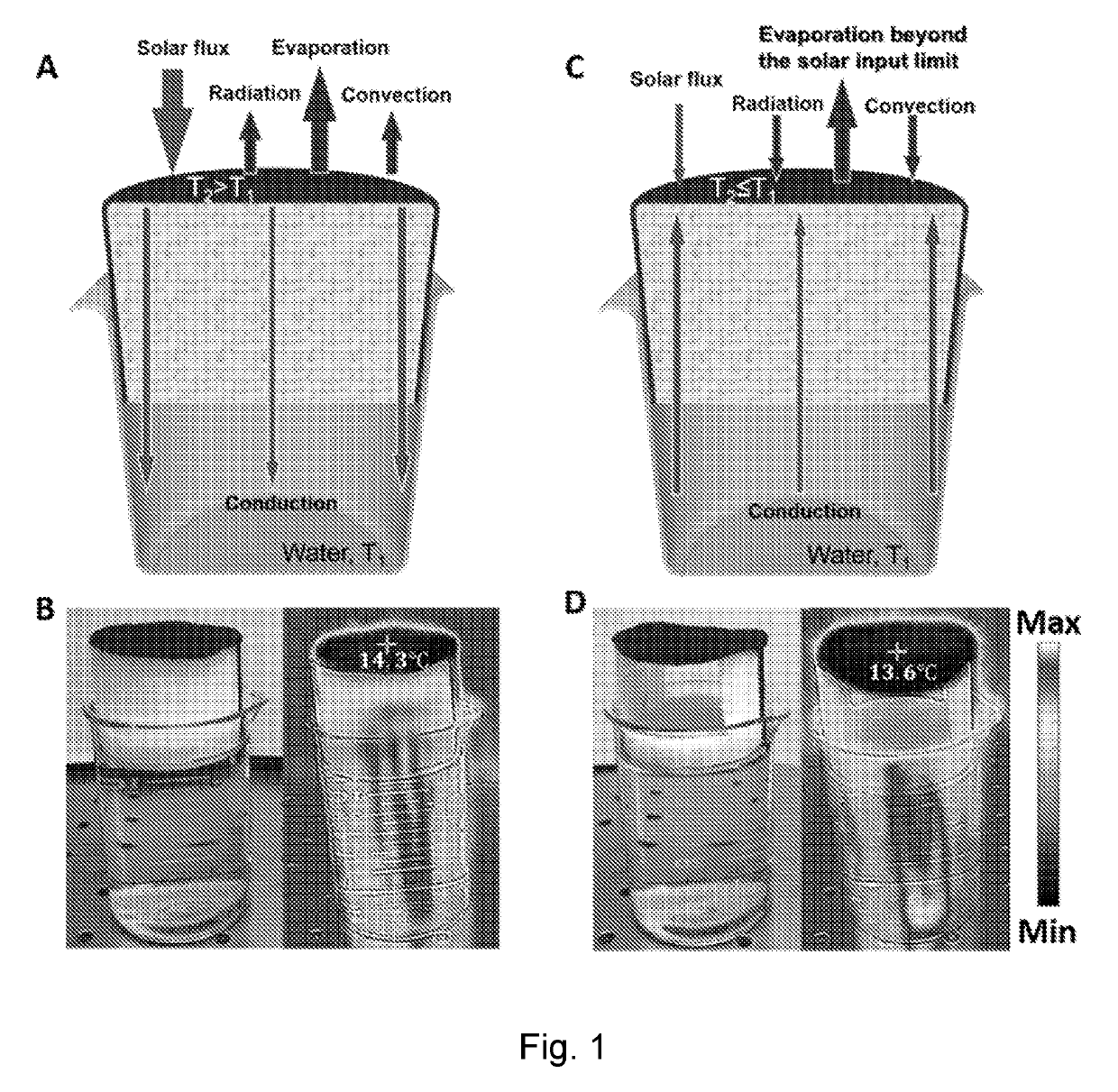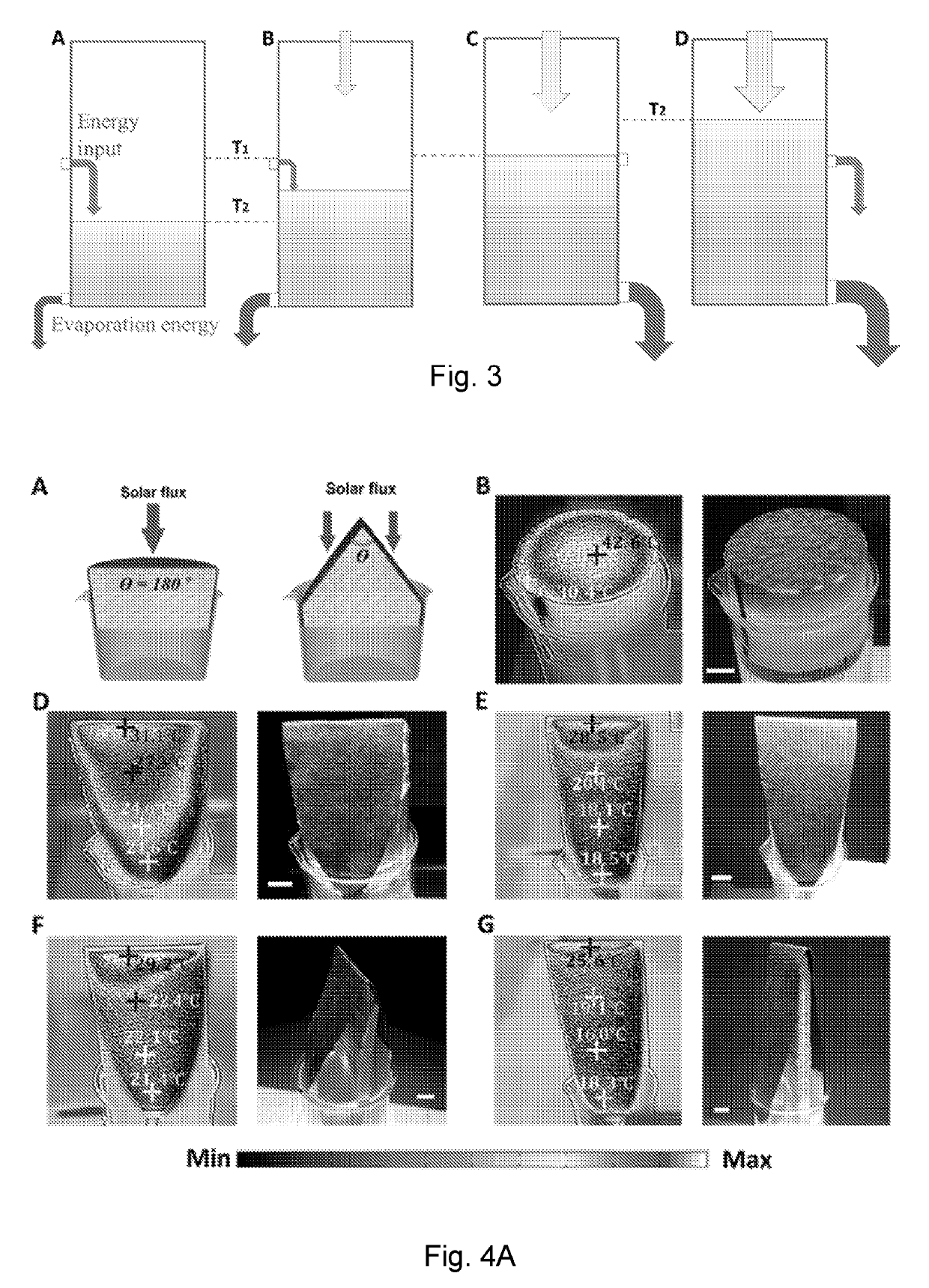System and method for solar vapor evaporation and condensation
a solar vapor and condensation technology, applied in the direction of evaporator regulation/control, separation process, evaporation, etc., can solve the problems of low efficiency, high energy consumption, and various advanced and expensive metallic plasmonic and carbon-based nanomaterials that have been explored for use, etc., to avoid pretreatment, the effect of avoiding the cost of seawater intak
- Summary
- Abstract
- Description
- Claims
- Application Information
AI Technical Summary
Benefits of technology
Problems solved by technology
Method used
Image
Examples
experimental embodiments
and Results
Materials
[0085]In an exemplary embodiment, a substrate of carbon-coated cellulose and polyester blend (CCP) was fabricated using commercially available materials: paper (Texwipe™ TX609) and carbon powder (Sid Richardson Carbon & Energy Company). In some embodiments, evaporation performance can be further manipulated by engineering features of carbon nanomaterials. For example, the light-absorbing substrate can be enhanced with hydrophilic features. In particular, it may be advantageous to provide a substrate that comprises a black material able to absorb water and sunlight simultaneously and evaporate moisture at a higher rate. To improve these characteristics, the porosity of a carbon nanomaterial may be manipulated in some embodiments. In some embodiments, the substrate and / or the carbon may be chemically treated to increase hydrophilicity. In some embodiments, the substrate and / or the carbon may be treated with sodium alginate.
[0086]In an experiment to demonstrate such...
PUM
| Property | Measurement | Unit |
|---|---|---|
| angle | aaaaa | aaaaa |
| angle | aaaaa | aaaaa |
| angle | aaaaa | aaaaa |
Abstract
Description
Claims
Application Information
 Login to View More
Login to View More - R&D
- Intellectual Property
- Life Sciences
- Materials
- Tech Scout
- Unparalleled Data Quality
- Higher Quality Content
- 60% Fewer Hallucinations
Browse by: Latest US Patents, China's latest patents, Technical Efficacy Thesaurus, Application Domain, Technology Topic, Popular Technical Reports.
© 2025 PatSnap. All rights reserved.Legal|Privacy policy|Modern Slavery Act Transparency Statement|Sitemap|About US| Contact US: help@patsnap.com



